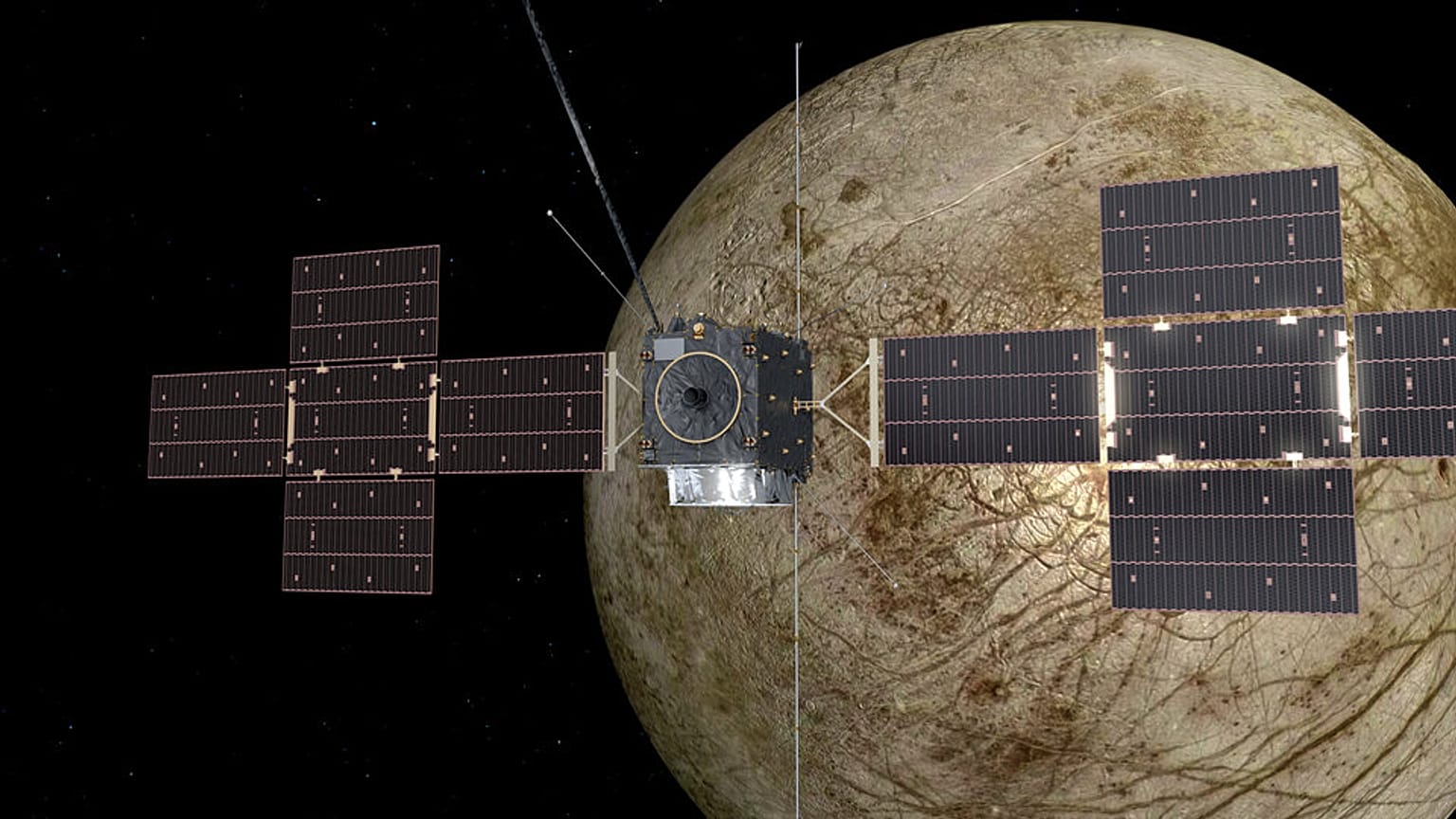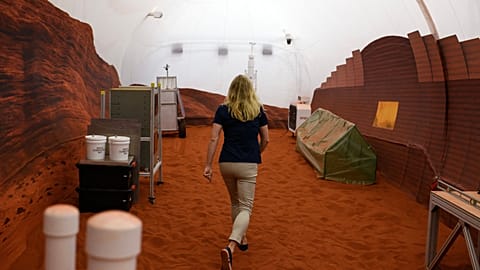ESA is launching a spacecraft to explore Jupiter and its icy moons on Friday. Here’s everything you need to know about the JUICE mission.
On Friday, the European Space Agency (ESA) is launching a new major mission to explore Jupiter and its icy moons - which scientists think could be potentially habitable for life.
The JUICE mission - which stands for Jupiter Icy Moons Explorer - will make detailed observations of the solar system’s largest planet, as well as three of its biggest moons.
Callisto, Europa, and Ganymede are all thought to have subsurface oceans - and are seen as candidates for potentially hosting life.
The spacecraft will be launched from ESA’s spaceport in French Guiana from an Ariane 5 rocket - the same rocket that launched NASA’s James Webb Space Telescope in 2021.
JUICE’s mission timeline
The launch was slated for Thursday, April 13, at 12.15 pm GMT (1.15pm CET) but it was postponed until the next day due to concerns about the weather.
Once launched, it will deploy its solar arrays, antennas, and other instruments - and its 8-year journey to Jupiter begins. Over that time, it will conduct three Earth flybys, and a flyby of Venus, as it uses gravity assists from the planets to launch itself towards Jupiter, nearly 900 million km from Earth.
By July 2031, JUICE should be in Jupiter’s orbit, and between then and the end of its mission in 2035, it will conduct various flybys of Jupiter’s moons.
In 2034, it will become the first human spacecraft to enter orbit around another planet’s moon, when it goes into orbit around Jupiter’s biggest moon, Ganymede.
What’s the mission?
JUICE will make detailed observations of the planet, known as the Gas Giant, and its three large ocean-bearing moons – Callisto, Europa, and in particular Ganymede.
It will study their icy crusts and what are believed to be ocean layers underneath.
The mission is also aiming to build the best picture yet of Jupiter as an archetype for other gas giants throughout the universe.
A complex system, Jupiter’s atmosphere, magnetism, moons, and dusty rings all interact with one another, and by finding out how these components work together, the mission will shed light on what other gas giant systems are like.
It will study the chemistry, structure, dynamics, weather, and climate of Jupiter, and look at how an atmosphere works without a solid planet beneath it. It could also show how habitable places could exist in Jupiter-like systems elsewhere.
Lunar exploration
The primary target moon is Ganymede - the largest moon in the solar system, and the ninth-largest object in the solar system. It is the only moon in the solar system to generate its own magnetic field, and this will be one of JUICE’s main points of investigation.
JUICE will go into orbit around 500 km off the moon’s surface, and will be studying its hidden ocean, its past and present activity, and the possibility of habitability underneath its icy shell.
When it flybys Europa, JUICE will be looking for any biosignatures and pockets of water. The moon may vent water vapour out into space via plumes.
The mission will make 21 flybys of Callisto, one of which will be at just 200 km from the surface, and it will be taking a closer look at the moon that may contain a salty subsurface ocean.
The three moons together are thought to hold an immense amount of water, which could be as much as six times the volume of water in Earth’s oceans.
Previous missions have gathered evidence of geological activity on the three moons, and JUICE will explore whether there is any current activity - and probe how active they may have been in the past.
The tech array
JUICE will carry 10 instruments on board to conduct its studies of the Gas Giant and its moons. One of these, 3GM, is a radio package that will study the gravity field of Ganymede, the extent of the internal oceans on the moons, and the structure of the ionosphere of Jupiter and its moons.
MAJIS is a spectrometer that will look at cloud features on the planet, as well as characterise ice and minerals on the lunar surfaces. J-MAG meanwhile is a magnetometer, which will also study the subsurface oceans on the moons.
Radar, a UV imaging spectrograph, an optical camera system, and a laser altimeter will also be used to make a number of measurements.
The mission is the first to send a spacecraft to Jupiter since Juno, which has been orbiting the planet since 2016, having been launched in 2011. A different spacecraft, however, is scheduled to reach Jupiter before JUICE - NASA’s Europa Clipper.
Set for launch in 2024, Europa Clipper is expected to reach Jupiter’s moon Europa in 2030, and will spend five years studying the moon in the hope of determining whether it has conditions suitable to support life.


















